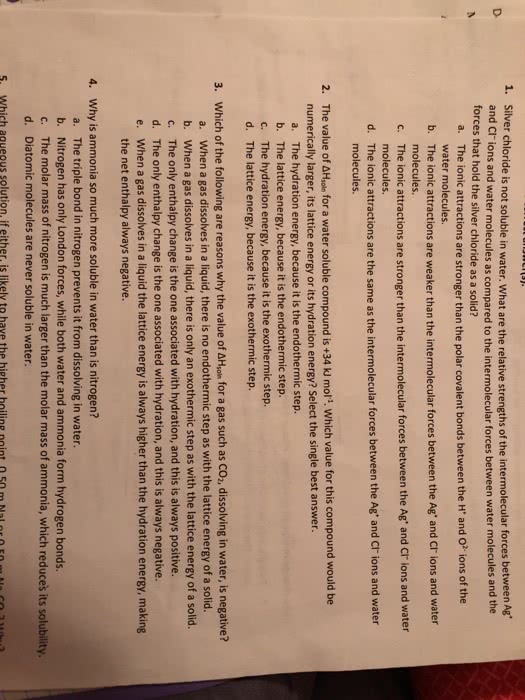BCH 2333 Study Guide - Hydrogen Bond, Boiling Point, Catabolism
58 views2 pages
11 Jul 2014
School
Department
Course
Professor
Document Summary
Intramolecular cohesion due to hydrogen bonding causes a strong lattice to be formed. Boiling point is higher because it is hard to break the h bonds. The attraction of na and cl is higher in methanol because water forms stronger hydration pockets around the ions in the solution preventing the ions from re-combining. Burning carbon bonds involves oxygen as an agent that breaks down the bonds producing water and co2. Since oxygen is a diatomic molecule it is nonpolar. Salt is a polar molecule because it is charged, while benzene is nonpolar. A polar molecule is hydrophilic, while a hydrophobic molecule is nonpolar. It depends on the relative amount of each group. For example, the hydrophobic part will go away from water, while hydrophilic part will go into water. If there is not clear separation of the parts, then you just have to test the molecule out.
Get access
Grade+20% off
$8 USD/m$10 USD/m
Billed $96 USD annually

Homework Help
Study Guides
Textbook Solutions
Class Notes
Textbook Notes
Booster Class
40 Verified Answers

